What is the Festival of San Isidro?
San Isidro is a citywide festival, pure and simple, but unlike San Fermín in Pamplona or Las Fallas in Valencia, it isn’t really a great source of local pride or identity for the city of Madrid. Many residents take advantage of the three-day weekend to travel elsewhere—often back to their hometowns—or to get a bit of Spring cleaning done in the spare time off work. This should come as little surprise. Madrid is the great Spanish melting pot, a cultural and economic center that pulls people in from across the country but never fully instills in them the type of local identity that underpins the more famous Spanish festivals.
If anything, Gay Pride is the better candidate for Madrid’s primary festival. It certainly draws more visitors and press to the capital, and seems to adequately reflect the anarchic, welcoming nature of the city—one that shrugs off regional Spanish identity to embrace anyone who’s down to party.
But San Isidro does have its supporters. They’re mostly residents with deep family roots in Madrid, proud Madrileños who dress up in traditional garb to eat the classic food and dance the chotis in parties scattered throughout the central barrios. The festival has some of the cultural posturing of the “castecismo madrileño,” the Madrid castizo identity that’s proudly Spanish, built on the rejection of the bourgeois French affectations of the elite, and the feeling still stands.
I have a special affinity for San Isidro myself, partly because of the contradictions in it—a festival that both represents the soul of Madrid and couldn’t be further from it. The strong passion and utter indifference toward the holiday reflect the multiple layers of Madrid’s identity, at once a city and a collection of barrios, provincially Spanish and globally connected.
Or maybe we all just like beers in the park.
Great. Who the hell is San Isidro?
Good question. Legend has it that one day, in the Moorish town of Mayrit (present-day Madrid), a day laborer named Isidro was ploughing his lord’s field when he miraculously caused a spring to gush forth from the earth, like a teenager hitting a sprinkler head with the lawnmower.
In another instance, Isidro saved his son from a deep well by praying to raise the water level, thus bringing the child floating back to the top.
These are several of his many miracles that would end up lifting this humble and devout Madrileño to prominence and eventual sainthood—a move spearheaded by the Spanish monarchs who had a particular interest in the miracle worker. King Phillip II himself was supposedly cured of a grave ailment by drinking the water that flowed from a spring that San Isidro found. San Isidro’s most famous miracles took place in Madrid and had to do with water, making this diviner, well-digger, and rainmaker the patron saint of both Spanish farmers and the city of Madrid.
Today, in what we now know as the Pradera de San Isidro (a park in the Carabanchel neighborhood south of the center—metro Marqués de Vadillo) his miraculous springs still flow. A hermitage dedicated to the saint was erected in the area during the 14th century, then rebuilt in 1725 near one of Isidro’s famed springs, and believers still pay their respects and collect the healing water during the May festival thrown in his honor.
Uh-huh. So how should we celebrate it?
While the festival historically takes place in the Pradera de San Isidro (a meadow in Carabanchel), it has since spread throughout the entire city. Activities sputter to a start during the week but officially kick off with the commencement speech (pregón) on Friday at 8pm in the Plaza de la Villa, attended by city officials and an invited celebrity—2016’s is the musician Santiago Auserón, a staple of the Movida Madrileña. The celebrations will last until Monday evening.
Top 10 things to do (2016):
1. Grab a guide and find what you like: The official San Isidro guide is the one true resource, praise be upon it.
2. Go to a free open-air concert: (Everywhere throughout the long weekend) There are many free open-air concerts throughout Madrid during San Isidro, including in the Plaza Mayor, Las Vistillas and Plaza de la Villa. On several nights at 9pm, for example, live classical music is played next to Templo De Dubod as the sun goes down. It’s worth seeing. Again, the official guide is your best source here.
3. Have yourself a class picnic in the Pradera (Sunday 15th is the big day – Pradera de San Isidro, though there are also events on Saturday and Monday) This is the most emblematic part of the festival. In fact, the picnicking tradition here has purportedly been around since the 1600s, and by the time Goya used it as the subject of some paintings in the late 1700s the tradition was already widely referenced. The pradera area has many stands with food and drink of all sorts, so you can bring your own or buy food down there. It’s an all-around good time.
Warning: last year there were about 12 toilets stationed for the thousands of people at the Pradera, so be prepared to do the festival’s traditional holding-it-in dance.
4. Party on the street “Paseo de 15 de Mayo” (Primarily Sunday, the 15th, to a lesser extent Saturday and Monday / next to metro stop Marqués de Vadillo) The San Isidro Festival has a very prominent “barrio” feel to it, and the neighborhood next to the Pradera de San Isidro (Marqués de Vadillo Metro) reigns supreme. They even named the major street that cuts through it after the date of the celebration, May 15th. Go here to drink wine and beer from the bars that set up stands along the street, then head onward to the Pradera for your picnic.
5. Check out the tacky/amazing carnival (Saturday, Sunday, Monday / Pradera de San Isidro): Like all carnivals, it has rides of questionable safety and hordes of roaming teenagers, but it’s a good time nonetheless. Last year I enjoyed playing the childhood favorite, “shoot the single-serving alcohol bottle off a shelf with a cork gun.” There’s also a ferris wheel that offers a good view of the city.
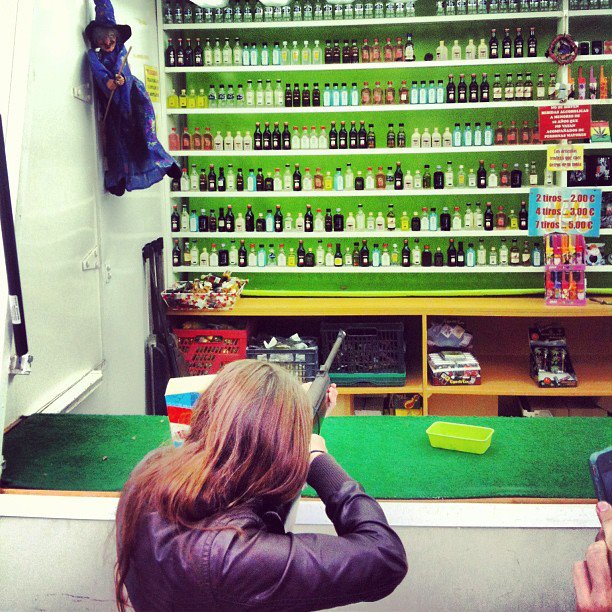
Everyone’s favorite childhood fair game, “shoot the single-shot liquor bottles with a cork gun!” This was San Isidro a few years back. I won!
6. Party in Las Vistillas (Friday, Sat, Sunday, Monday near Puerta de Toledo, Jardin de Las Vistillas) This little park in La Latina plays annual host to another of the city’s “verbenas” (local parties), together with the Plaza Mayor and the Plaza de La Villa. The scenic gardens fill up with food stands, music, and people dancing the chotis. It’s usually one of the first things that comes to locals’ minds if you ask them about the holiday. (For acts taking place here, check the guide).
7. Drink Wine Under Fireworks/ Music in Retiro (Saturday and Sunday, 8:30pm/dusk): Bring a bottle of wine and a blanket, lay back and enjoy.
8. Check out the bullfights: (Afternoons in Las Ventas) San Isidro is traditionally the beginning of bullfighting season in Madrid, and it’s actually the biggest bullfighting festival in the world. There are 24 afternoons of bullfights, including one specific day in which they all don Goyesco costumes, an event reasonably called La corrida goyesca. You can find schedules online and tickets for as low as 8 euros to some events. Others are quite popular and pricy, so get on those tickets ASAP if you’re into the bloodsport.
9. Watch the little Parade of Big-heads and Giants (Friday 13th at 6pm –Route: Plaza de Santo Domingo – Plaza de Callao – Puerta del Sol – Mercado de San Miguel – Plaza de la Villa): This strange little parade has origins in the 16th century but was rediscovered in the 1800s—it marches larger-than-life figures down the main streets of the center of Madrid. The giants are four pairs of monarchs who represent Europe, Asia, Africa and America. (Author’s note: I’ve never actually been to this, but it looks moderately interesting, very grammable.)
10. Hit Up the Castizo Swing Festival in the Matadero (Saturday, May 14th, all day, The Matadero) The endlessly hip Matadero can do no wrong. There will be dancing, singing and general rabble-rousing throughout the day and into the night on Friday, with live musical acts. Check their website for more details about the event.
10.1. Stroll by the Feria de Cacharrerías (Sunday Afternoon, Plaza Comendadoras in Conde Duque / Malasaña) Go get yourself a nice clay pot or something. You deserve it. Here’s a good lowdown.
Thanks for the tips! So what’s typical of the festival?
Traditional Dance: El Chotis
The history of the chotis dance is surprisingly recent, arriving to the Spanish capital only around 1850 from Vienna, but it’s now considered a cultural hallmark of Madrid. You’ll see people dancing it on stages or in groups, particularly in The Pradera, the Plaza Mayor, or in Las Vistillas park. The men traditionally don’t move much at all, and it’s said you can dance it on a single tile.
In terms of music, my person favorite chotis song, and perhaps the best known, is Madrid! Madrid! Madrid! I once saw an old man singing this passionately at a now-defunct karaoke bar off the Plaza Mayor. It was pure magic.
Traditional Clothing: El Chulapo
The spirit of Goya’s Madrid is alive and well in San Isidro with some revelers dressing up like the 18th-century subjects of the famous Madrileño painter’s artwork, in a style fittingly known as “Goyesco.”
You’ve probably seen little children running around these days in their traditional chulapo/ chulapa outfits. Kids and adults alike dress up in this 19th-century outfit and go to the major festival grounds around they city. They’re all adorable. If you’re anyone, you might consider buying yourself the traditional palpusa hat. I certainly might.
Traditional Food:
Rosquillas: Little doughnuts, sold mainly during the festival, usually made with olive oil and a slight anise flavor. There are different names for each type.
Las Listas: rosquillas with powdered sugar on top.
Las Tontas: rosquillas without powdered sugar on top.
Las de Santa Clara: rosquillas with glazed sugar on top.
Las Francesas: rosquillas with glazed sugar and almonds on top.
Fritura de gallinejas y entresijos: fried hen innards (A festival favorite of tons of people!)
Barquillos: little cylindrical wafers, similar to an ice cream cone. The seller, known as a barquillero, dresses up in a chulapo outfit and plays a type of roulette on something that looks like a portable oxygen tank. If you win, you get two barquillos!
Cocido Madrileño: the typical dish that comes out any time Madrid is feeling local pride.
Encurtidos: skewers of peppers, olives, cocktail onions, etc.
Vino en bota: a sac of wine. Like normal wine, but in a sack.
Clara con limón: Beer mixed with a carbonated lemon beverage.
Traditional Pilgrimage: Hermita de San Isidro
This isn’t much of a “pilgrimage” considering it’s right next to the Pradera where you’ll be hanging out, but if you’re of a religious inclination and fancy stumbling over to pay homage to Madrid’s patron saint, be prepared to wait in an excruciatingly long line of mainly elderly Madrileños and devout Catholics at the Hermita de San Isidro. Bring a botijo to collect some of the healing water and memorize this traditional prayer to say when kissing the box containing his relics:
“San Isidro hermoso,
patrón de Madrid,
que el agua del risco
hiciste salir”
I want to whip out some interesting San Isidro facts while I sip a beer!
You do? Are you sure that’s wise?
You can start by listing all the rosquilla varieties, that’s fun. Make sure to not stop, even as people begin wandering away from you. You could also half-heartedly suggest a visit to the San Isidro museum, which occupies—in what seems to be a bit of a historical 6-degrees-from-Kevin-Bacon—a 17th-century house built on the spot of an even older house that once pertained to the Vargas family, who were the lords of the miraculous day-laborer.
If anyone accepts your offer to go, feign appendicitis and stumble away.
I need even more fun facts, I plan on partying the whole day!
Alright, settle down.
• The actual remains of San Isidro are kept in a prominent position behind the alter in the Almudena Cathedral, just in front of the Royal Palace in Madrid.
“Cool!”
• One of San Isidro’s miracles involves feeding pigeons from a bag of grain that miraculously replenished itself.
“Say whaaaa?”
• One of his miracles was getting an angel to plow the field for him while he just sat around praying.
“Clever!”
His wife is known as Maria La Cabeza (the head) because her head was kept as a relic after her death, paraded around by believers to bring rain to the dry countryside.
“Quaint!”
• Someone in Queen Isabel’s court bit off one of his mummified toes in a religious fervor.
“Understandable!”
• Francisco Goya has painted several wildly different takes on the San Isidro pilgrimage and festival, including one in the grotesque style of his “Black Paintings” collection.
“Educational!”
• The “Puente de Toledo” bridge (also known as the “Puente de Praga” due to its resemblance to the Charles bridge in Prague) has a statue of San Isidro performing the miracle of saving his son from the well. His son later died of other, non well-related causes.
“huh.”
That church visible from the Plaza Mayor as you walk down toward La Latina is called San Isidro church.
“How about we talk about something—”
“Rosquillas” is how they translate “donuts” in the Castilian version of the Simpsons, and, Dunkin’ Donuts is known as Dunkin’ Coffee in Spain, all because “Donut” was already a registered trademark in the country.
“Listen, I gotta go…”
I want some key vocabulary.
Verbena: a festival for a patron saint, usually with traditional dress and dancing. “This verbena rocks!”
Romería: a Catholic festival based on a pilgrimage to a hermitage or sanctuary. “This Romeria rocks!”
Botijo: clay jug-like thing to collect water from the sacred springs. “Whoa, sick botijo. Botijos rock!”
Chulapo/a: the name of both the people and the traditional costumes for San Isidro. “Hey, those chulapos rock!”
Chotis: The traditional dance. “Chotis rocks!”
Goyesco: Goya-esque. “This all feels very goyesco, which rocks!”
Rosquillas (la tonta, la lista, etc…): typical doughnuts. “These rosquillas are fine, I guess.”
Bota de vino: a wine recipient. “I shouldn’t have drunk that rockin’ bota de vino all by myself. How goyesco of me.”
Where to find it on a map — “Pradera de San Isidro”
<M> Marqués de Vadillo (line 5)
[googlemaps https://www.google.com/maps/d/u/0/embed?mid=zGCIXzIDPGqs.kBmVv5oWRpGg&w=640&h=480]

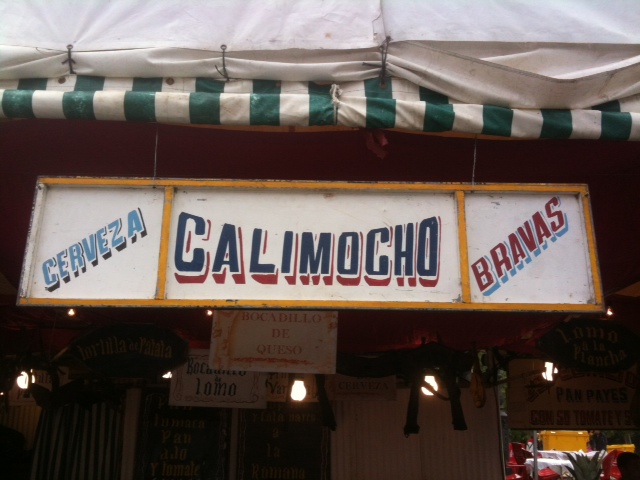


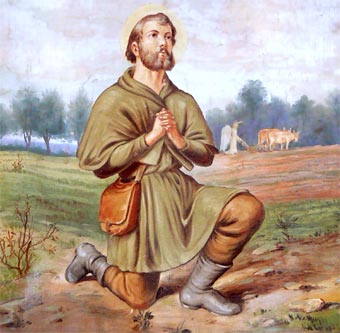
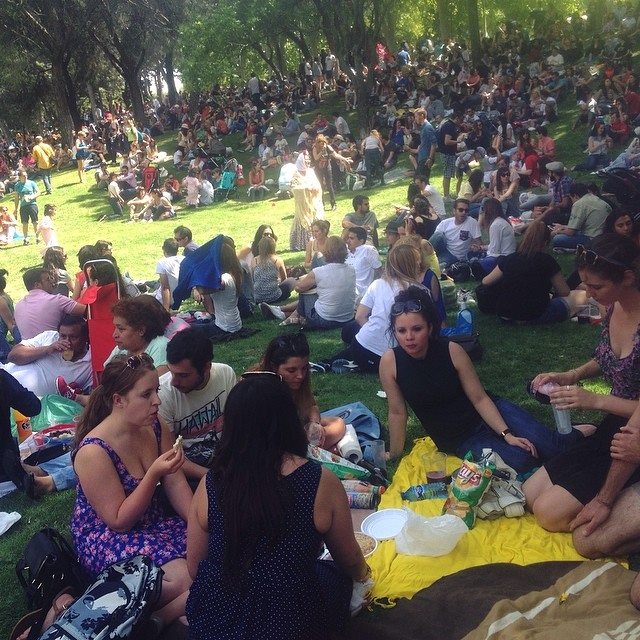


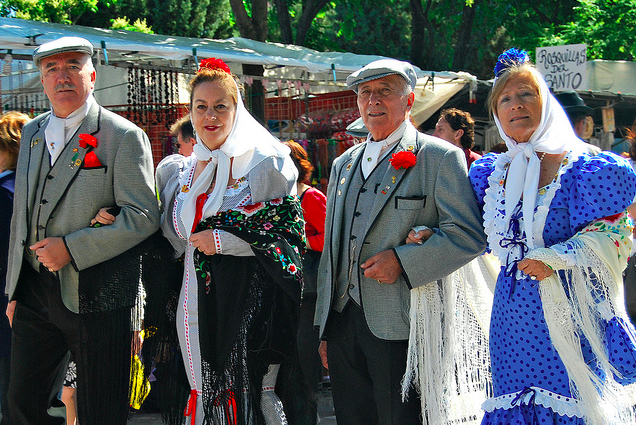

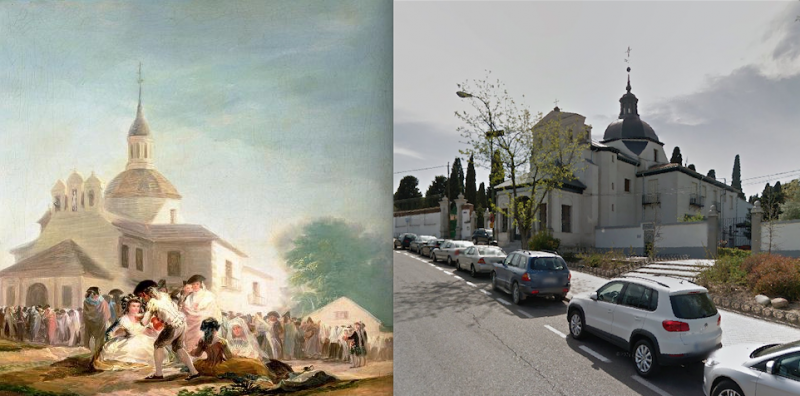

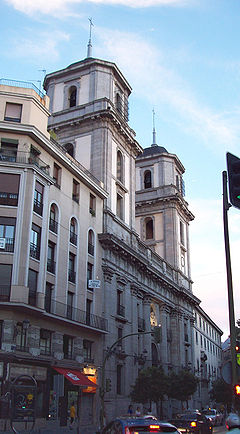

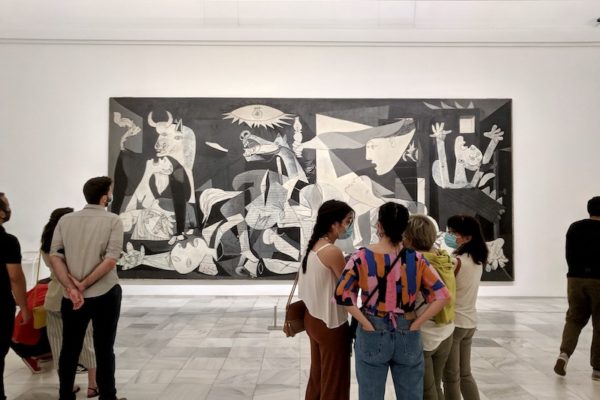
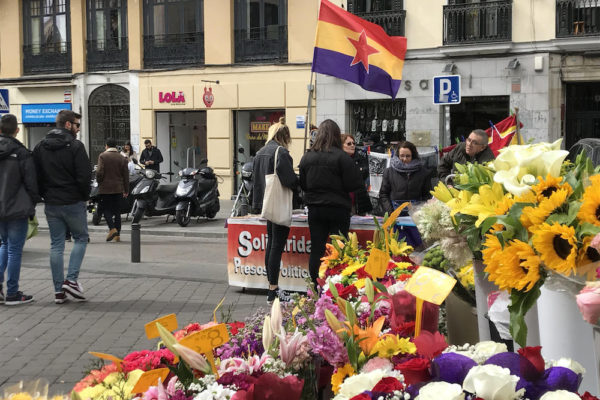



Robert
I would strongly advice against going to a bull fight.
Cant believe you keep mentioning this as a thing to do.
Its a stupid Spanish thing where they should be ashamed of.
And as a blog for the non Spaniards I think it shouldn’t even be mentioned.
Ernest
I’ll be checking out the Fiest of San Isidro tomorrow, May 15, 2016. I can’t believe I allowed myself to miss the previous days, May 12. Still, never late than never. Will try to get some pics on the giant heads and the firework displays at the retiro. thanks!